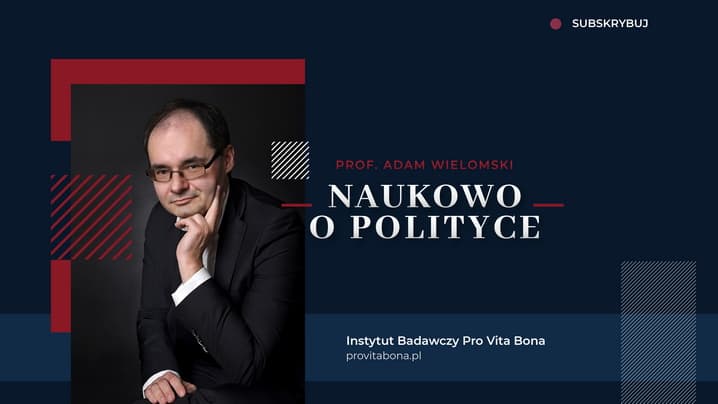On October 15, 2003, the prospects of the broader Right in Canada brightened somewhat for the first time in decades. Overcoming years of negativity, the Canadian Alliance (which had emerged from the Reform Party of Canada in 1998-2000), and the federal Progressive Conservative party agreed to unite themselves (pending the approval of their memberships by December 12, 2003), as the Conservative Party of Canada (the former name of the Progressive Conservatives from several decades ago).
Under the leadership of Stephen Harper, this Conservative Party was able to reduce the Liberals to a minority government (a plurality of seats in the House of Commons) in the June 2004 federal election. Subsequently, the Conservative Party won a minority government in January 2006. Sticking mostly to centrist policies, the Conservative Party remained in power until 2008, when Stephen Harper himself called an election. Nevertheless, the majority still eluded him. The Conservative Party minority government was voted down in the federal Parliament in 2011, but they were able to win a majority in the ensuing federal election of May 2011. However, the centrist policies continued.
In the October 2015 federal election, the Liberals came roaring back to power, under the leadership of Justin Trudeau. Justin is the son of Canada’s long-serving Liberal Prime Minister Pierre Elliott Trudeau. It is apparent that whatever fragmentary conservative measures Harper had been able to undertake, were now going to be swept away in a great tide of progressivism.
The Conservative Party continues to face an uphill battle against the Liberal Party and the extra-parliamentary Left.
It should be pointed out that Canada today may be seen as combining the most liberal aspects of America and Europe — indeed, it may be world’s most liberal society. Like some European countries such as the Netherlands, it is extremely socially-liberal, as demonstrated by the Canadian federal government’s total acceptance of „same-sex marriage.” Although a vote on the issue took place in the Federal Parliament in 2005, it was with direct referral to the Canadian Supreme Court. What conservative critics call „judicial activism” is in Canada a comparatively late but now flourishing development, which only really got underway with the introduction of the Charter of Rights and Freedoms (1982) into the Canadian Constitution. The Charter, clearly a left-liberal rather than classical liberal document, essentially enshrined virtually the entire agenda of Pierre Elliott Trudeau (Canada’s left-leaning Liberal Prime Minister from 1968-1984, except for nine months in 1979-1980) as the highest law of the land. After Brian Mulroney’s huge Progressive Conservative majorities of 1984 and 1988 — whose record in regard to social and cultural conservatism was indeed abysmal — Canada’s federal Liberal Party (headed by Jean Chretien) comfortably won the elections of 1993, 1997, and 2000.
On the other hand, unlike some European countries, Canada is characterized by very high rates of immigration, and it has whole-heartedly embraced multiculturalism, affirmative action (called „employment equity” in Canada), and diversity with a startling degree of unidirectional intensity. Canada’s official immigration numbers are more than twice as large as those of the United States — per capita — and are probably among the highest in the world. With a population of about 35 million persons, Canada had been receiving every year about a quarter-million immigrants. (The Liberals have recently raised the numbers to 300,000.)
At the same time, Canada has now embraced some of the more negative aspects of American society — such as the excesses of pop-culture, the trend to political-correctness, and growing litigiousness. However, it lacks many aspects of America that may temper the aforementioned trends.
In Canada, for example, the government accounts for about half of the GDP. (In contrast to about a forty percent in the United States.) Taxes are very high, relative to the United States. The Canadian medical system is stringently socialized to an extent unheard of in the United States. Canada’s gun control laws are also extremely strict. Unlike the United States, fundamentalist Christianity plays virtually no role in Canada. The debate about abortion and many other social issues is considered effectively closed.
In another extreme contrast to the United States, Canada has virtually no military (the entire armed forces, including army, navy, air force, and reserves, number about 92,600 men and women) and there is major disdain throughout much of Canadian society (and especially in elite opinion) towards the military.
Canada’s security provisions, refugee-policy, and control of its borders are also extremely lackadaisical, relative to what now appears to be the emerging trend in the United States.
Canadians appear to be characterized both today and in their earlier history by an unusual deference to governmental authority. Before 1965, Canada was probably a substantively more conservative society than the United States, but now, when the paradigm at the top has been fundamentally altered — in the wake of the „Trudeau revolution” — most Canadians are willing to follow the new, politically-correct line from Ottawa. There is virtually no heritage of independence, self-reliance, or belief in rambunctious free speech in Canada. Indeed, Canadian officials point proudly to their laws against „hate-speech” as highly necessary. They say they do not have „the American hang-ups” about restricting freedom of speech.
What may be concluded from the combination of points made above is that right-of-centre positions are rather rarely seen or heard in Canada (except perhaps in the Western province of Alberta). It could be argued that, given the left-liberal predominance in the Canadian media (especially in the government-funded CBC), in the education system (from daycare to universities), in the judiciary and justice system, in the government bureaucracies, in so-called high culture (typified by government-subsidized „CanLit”), in North American pop-culture and „youth culture,” in the big Canadian banks and corporations, and (on most issues) in the leaderships of the main churches in Canada, any existing right-of-centre tendencies are being continually ground down. There is also the panoply of special interest groups, who receive extensive government and some corporate funding.
Left-liberals had tried to maintain the centre-right parties in Canada in as eviscerated a shape as possible, building up the federal Progressive Conservatives at the expense of the Reform Party/Canadian Alliance, and bleaching out substantively conservative thinking as far as possible from both parties. It could be argued that, by Canadian standards, many of the more liberal Republicans or more conservative Democrats in the U.S., would have probably been placed on the „hard right” of the Canadian Reform Party. Even as elections come and go, the long-term trend is mostly towards the ever-intensifying undermining of substantively conservative impulses in Canada.
In the last decade (presumably in reaction to the collapse of Soviet Communism) left-liberalism has also clearly become far more willing to concede some major fiscal and economic issues to the „managerial Right” — while continuing a ferocious struggle against any more substantive conservatism. It appears that, in the main, only „fiscal conservatism” is permissible in Canada.
The Conservative Party will make little headway in the teeth of a hostile social, cultural, and political climate, unless it endeavours to give encouragement to the creation of some kind of infrastructures where more intellectual explorations of right-wing ideas and philosophies can take place in Canada. What is especially needed in Canada for conservatives is a broadly right-of-centre magazine which could serve a mobilizing role similar to the early years of National Review in the United States, as well as an academic outreach body along the lines of the Intercollegiate Studies Institute in the United States (which publishes scholarly quarterlies and books, as well as offering substantial scholarships). The ISI embodies a very reflective and serious conservatism which moves far beyond day-to-day policy issues and merely fiscal and economic conservatism (while not being explicitly tied to any one religion or denomination). Perhaps the think-tank Cardus could eventually evolve into serving a similar role in Canada.
Today in Canada, there are numerous, left-wing, extra-parliamentary infrastructures, whose funding (most of which comes from the federal government) outweighs that of putatively right-wing infrastructures such as the National Citizens’ Coalition and the Fraser Institute (who rely strictly on private donations — and are almost entirely focussed on economic and fiscal issues) by astronomical factors. The effectiveness of these left-wing infrastructures has contributed to the huge intellectual influence of the New Democratic Party (Canada’s social democratic party) particularly on the Liberal Party. It may be remembered that Trudeau was a former NDP member, and some have indeed suggested that he „hijacked” a somewhat more traditionalist and centrist Liberal Party in a radical direction. The extent to which large numbers of persons in Canadian society (especially in the intellectual classes) are utterly captivated by and beholden to ideas of left-wing provenance cannot be underestimated. It is only the building up of infrastructures of a serious intellectual Right in Canada that could make a difference in this regard.
The current-day Canadian situation — of near-total left-liberal intellectual hegemony, of very little authentic academic or journalistic debate, and of little hope that a substantively conservative party will ever unseat the Liberals at the federal level — cannot be described as offering prospects for a truly humane future for Canada. There is certainly no intellectual balancing of Left and Right, and very little possibility of alternation at the federal level between left-leaning and substantively conservative parties, in Canada today. A Conservative electoral triumph – should it ever occur in such a difficult environment – is likely to be overwhelmed by ferocious infrastructural opposition – much in the same way that Mulroney’s huge majority in 1984 was sandbagged. The ongoing, decades-long, “prior constraint” against the Centre-Right Opposition coming to or ever exercising any meaningful degree of power in Canada – fundamentally contradicts Canada’s parliamentary and democratic ideals.
Mark Wegierski


